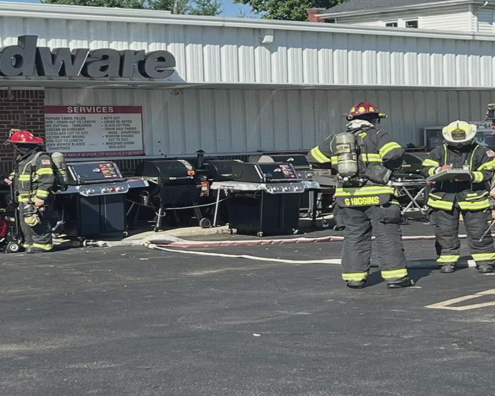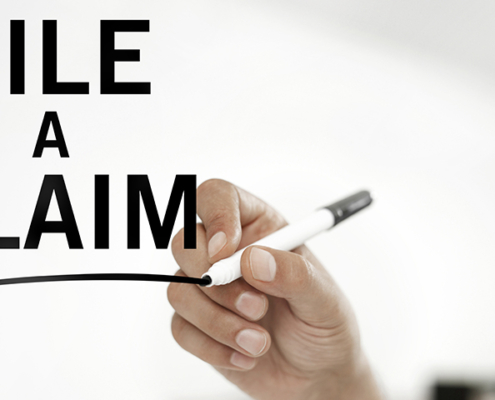Price
The cost of insurance is always a topic of discussion that is brought up. It is important that you understand what really plays a factor with determining the price and cost of your insurance.
We will dive deeper into and share more information about the factors that go into commercial property, business auto, general liability, umbrella and excess liability, cyber liability, employment practices liability, management liability and worker’s compensation.
Commercial Property
As you can imagine, a multitude of factors can impact the price of your insurance protection for your assets. Below we will address some, but not all, of the key factors that can impact what you ultimately pay for coverage.
- Location – This can play a key role in how coverage on your buildings and personal property are priced. Things like Fire Protection Class identify how far your facilities are located from the responding fire department, how well they’re equipped and the municipalities infrastructure. In addition, actuarial data around crime and weather can play roles in your final rates.
- Construction – The materials and methods used to construct your building or the one you lease can impact your pricing as well. A stick built structure has a greater fire load than a steel structure. Insurer’s use various classes of construction type to classify buildings, like Frame, Joisted Masonry, Masonry Non-Combustible, Non-Combustible and Fire Resistive.
- Security and Safety Measures – Features that enhance the safety and security of your facilities can impact pricing. Is your building equipped with fire protection like a sprinkler system, fire alarms, fire and smoke detection, etc. In addition, are system in place to protect the facilities from crime like controlled access, cameras, burglar alarms, etc.
- Age – When your facilities were constructed will also be a determinant in pricing. Unfortunately, older facilities are often looked upon less favorably. However, if you maintain detailed maintenance records and can substantiate updates to key building systems, like Electrical, Plumbing, HVAC and the Roof that can positively impact how the “actual” age of the structure is considered.
- Underwriter Discretion – Lastly, how your coverage for your assets are presented to and evaluated by the underwriter can play a significant role in how your coverage is priced. They will look at your past history of losses. Do you maintain good housekeeping practices? Have you made investments in the property since moving in or taking ownership. There is a wealth of information available on commercial property like Insurance Services Office (ISO) and Building Underwriting Report (BUR) inspections that underwriters will lean heavily upon. Controlling the narrative in these areas can provide for best in class terms.
Business Auto
Have you ever noticed when looking at your Commercial Auto policy there are numbers that appear next to each listed coverage? These numbers are Covered Auto Designations and can have an impact on how your autos are insured for liability and physical damage.
1 = Any “Auto”
This is the broadest symbol designation and covers any “auto.”
2 = Owned “Autos” Only
This symbol covers any “auto” owned by an insured, including any “auto” that is acquired after the policy begins. The symbol also applies to any “trailer” while it is towed by an owned vehicle.
3 = Owned Private Passenger “Autos” Only
This symbol covers only private passenger type “autos” owned by the insured, including any private passenger type that may be acquired after the policy begins.
4 = Owned “Autos” Other Than Private Passenger “Autos” Only
This symbol covers all “autos” other than private passenger type “autos” (vans, trucks, motorized equipment) owned by an insured, including such vehicles that may be acquired after the policy begins. The symbol also applies to any “trailer” while it is towed by an owned vehicle.
5 = Owned “Autos” Subject To No-Fault
Any “auto” owned by an insured that is garaged or licensed in a state where no-fault benefit laws exist. This symbol also applies to any “auto” acquired after the policy begins.
6 = Owned “Autos” Subject To A Compulsory Uninsured Motorist Law
Any “auto” owned by an insured that is garaged or licensed in a state where drivers are required to carry uninsured motorist coverage. This symbol also applies to any “auto” acquired after the policy begins.
7 = Specifically Described “Autos”
Only those “autos” that are specifically listed on the policy are covered. The symbol also applies to any “trailer” while it is towed by a listed vehicle.
8 = Hired “Autos” Only.
This symbol covers only those “autos” that an insured leases, hires, rents, or borrows. HOWEVER, it does NOT include “autos” leased, hired, rented, or borrowed from an employee, partner, or member of an insured’s household.
9 = Nonowned “Autos” Only
This symbol covers only those “autos” an insured does not own, lease, hire, rent, or borrow that are used in the insured’s business, including “autos” owned by employees, partners, or members of an insured’s household, but only while those non-owned “autos” are used either in the insured’s business or personal affairs.
19 = Mobile Equipment Subject To Compulsory Or Financial Responsibility Or Other Motor Vehicle Insurance Law Only
This symbol only applies to land vehicles that are considered mobile equipment under the policy’s mobile equipment definition. It allows extension of coverage for vehicles in states that confer vehicle status by making certain types of self-powered equipment subject to registration/licensing law.
In addition to these symbols the radius, use (service or commercial), valuation and quality of driver pool can have an impact on your price.
General Liability
The amount of liability insurance needed for a business will vary from business to business based on several factors, including the type of business you are in and the specific risks that come with it.
When it comes to general liability you want to make sure your business is classified with the correct code. This allows for your business to be assigned the appropriate rate of coverage, as well as exclusions for GL insurance. It is also important to understand that different types of business are vulnerable to various kinds and degrees of risk.
Some of the factors that may impact you in terms of cost with your general liability covers is the structure of your business, past claims, location business type and the size of your business. All of these can play a factor in determining your premium and how much coverage you will need.
Cyber Liability
The cost of Cyber Liability insurance depends on your cyber risks – so how exposed is your business is. Network security companies, IT consultants and other companies that are responsible for their clients’ cybersecurity may pay more for cyber liability coverage. These businesses need what is called third-party cyber liability insurance, which provides protection if a client blames their business for failing to prevent a cyber incident.
However, most businesses only need first-party cyber liability insurance to defend against their own cyber risks. Businesses that handle a large amount of sensitive customer information, such as credit card numbers or Social Security numbers, pay more for this coverage.
For example, healthcare professionals with access to patients’ medical records and retail stores that collect customers’ payment information may have a higher premium.
Something else that is also important to note, is if you choose a cyber liability insurance policy with higher coverage limits, expect to pay more. The cost of a policy is directly related to the amount of cyber insurance coverage you buy.
Policy limits include both a per-occurrence limit (the amount the insurer will pay on a single claim) and an aggregate limit (the amount the insurer will pay during the policy’s lifetime, usually one year).
Employment Practices Liability
Employee practices liability insurance (EPLI) is a must have for all business big or small. EPLI protects companies against claims of discrimination, harassment, wrongful termination, emotional distress and many other common employee complaints. Every business with employees is at risk of getting hit with an employee lawsuit no matter how careful they think they are.
The following are typically what underwriters take into consideration when determining the cost of EPLI.
– Number of Employees
– Financial worth of the company
– Industry or business (certain industries inherently carry more risk than others)
– Turnover rates
– Hiring/firing procedures
– History of claims
– Written company procedures on employee conduct and training
Another big factor in the cost is the amount of coverage that a business or employer is looking for. There is a range – with most policy limits ranging from $100,000 to $1,000,000. The amount of coverage that your business will need has a lot to do with the same risk factors listed above.







